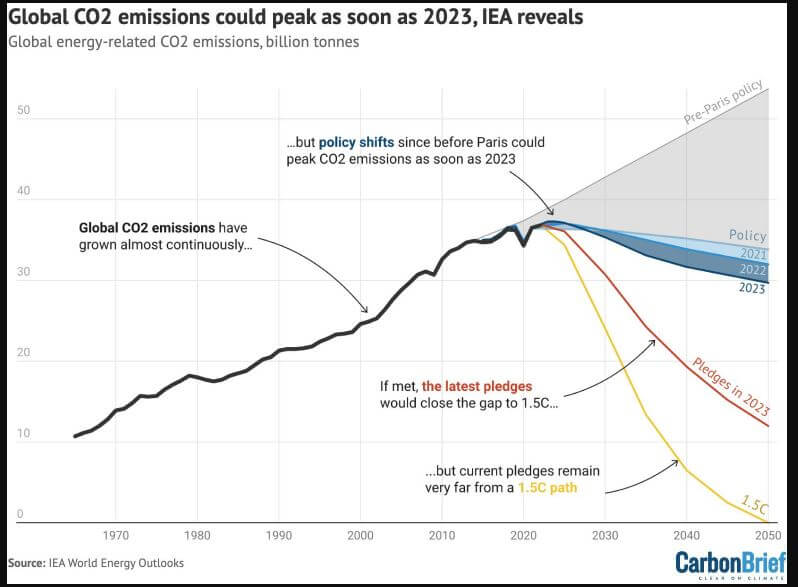The International Energy Agency (IEA) has updated its Net Zero Roadmap. According to the IEA, limiting global warming to 1.5°C remains possible.
In particular, the current rapid roll-out of solar power and electric car manufacturing is in line with a 1.5°C scenario. There has been a 40% increase in clean energy investment in just the past two years.
“The good news is we know what we need to do – and how to do it. Our 2023 Net Zero Roadmap, based on the latest data and analysis, shows a path forward,” said IEA Executive Director Fatih Birol.
In an analysis of IEA data, the think-tank Carbon Brief suggests world carbon emissions may actually peak this year. Carbon Brief’s forecast is for a peak between 2023 and 2025.

The key to the dynamic is the shift in economic power brought about by cheap solar and batteries. Clean energy now employs 36 million people worldwide compared to the 32 million employed in fossil fuels. Annual clean energy investment is US $1.7 billion, compared to US $1.1 billion in fossil fuels.
Carbon Brief is also optimistic about China’s clean energy boom. Their analysis suggests carbon emissions in China may commence long-term decline from 2024, now that China’s solar roll-out has begun to exceed the growth in its energy demand.
An analysis from the NGO Ember shows China would be far from alone in this regard. In fact, Ember says 107 countries have already passed their peak of fossil fuel use. They include the United States, Germany, Japan, Canada, Australia, Italy and the UK.
One of the great unknowns of the net zero transition, however, according to the IEA, is global supply chains. Geopolitical conflict or disruption will prove fatal to the trajectory envisioned given its effects on trade in minerals, materials and technologies.
Sign Up To Our Free Newsletter